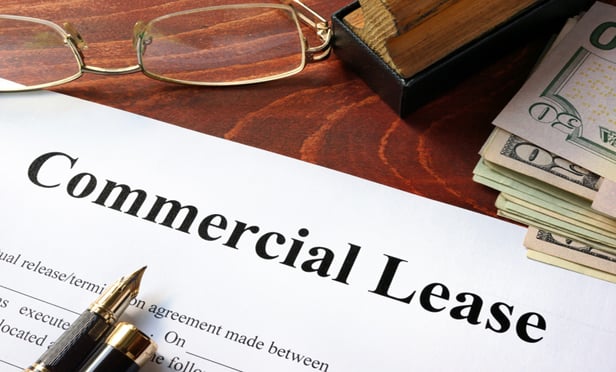Features

Analyzing the New Tenant Protections
On June 14, 2019, New York lawmakers approved, and Governor Cuomo signed, the "Housing Stability and Tenant Protection Act of 2019." The Act contains a series of laws affecting all rentals within the State of New York, making permanent New York's rent regulation laws, which proponents say will ensure that New York's tenants are protected. However, as with any legislation, especially one that seems to have been enacted hastily, there are unintended and possibly quite adverse long-term consequences.
Columns & Departments

Real Property Law
Cancellation of Satisfaction Denied<br>Questions About Meeting of Minds<br>Statute of Limitations Bars Foreclosure Action<br>Merger Doctrine<br>Unjust Enrichment<br>Mortgage Acceleration Revoked<br>Deed Valid When Not Intended As Security for Mortgage Debt<br>Specific Performance Denied for Failure to Show Ability to Close
Features

Delaware Supreme Court Theater Ruling Addresses Party's Deposition Demeanor
There are difficult depositions. Unproductive depositions. Ones where people cry or are rude or angry. And then, as the Delaware Supreme Court noted, there's Carole Shorenstein Hays. The 70-year-old Tony award-winning theater producer's behavior during her deposition prompted the Delaware Supreme Court to issue a 20-page addendum blasting her.
Features

Supreme Court Rules Rejection of Trademark License Does Not Rescind Rights of Licensee
Mission Product Holdings, Inc. v. Tempnology, LLC The question is whether a debtor's rejection of its agreement granting a license "terminates rights of the licensee that would survive the licensor's breach under applicable nonbankruptcy law."
Features

Supreme Court Holds Bar Against Registration of Immoral or Scandalous Marks Violates the First Amendment
Iancu v. Brunetti The Supreme Court held the bar against registration of immoral or scandalous marks "collided" with well-established free speech doctrine, namely, that laws disadvantaging speech based on the views expressed thereby violate the First Amendment.
Features

Trustee Litigation Trend: Tuition Clawback
With increasing frequency, Chapter 7 trustees are looking to insolvent parents as well as colleges and universities to avoid and recover for estate creditors payments made by insolvent debtors for the benefit of the debtors' dependents. These cases are premised on the theory that the tuition payments being made by insolvent parents for the benefit of their children are avoidable as constructively fraudulent transfers because the parents do not receive reasonably equivalent value in exchange for the payment of such tuition. Courts are divided as to whether the payment of a child's tuition provides reasonably equivalent value to the insolvent parents.
Features

Case on 'Coolcore' Marks Settles a 34 Year Debate Regarding Bankruptcy and IP Law
The U.S. Supreme Court issued its long-awaited decision in <i>Mission Product Holdings, Inc. v. Tempnology </i>, ruling that a trademark licensee can retain its rights under a trademark license agreement that is rejected by the licensor as an executory contract in bankruptcy.
Features

Civil Contempt for Discharge Injunction Violations: A New Standard That Brings the 'Old Soil' with It
In its recent opinion in <i>Taggart v. Lorenzen,</i> the Supreme Court decided that “[a] court may hold a creditor in civil contempt for violating a discharge order if there is no fair ground of doubt as to whether the order barred the creditor's conduct.” Although this standard appears to be new, it is more than a century old and “brings the old soil” from civil contempt with it.
Features

Let Freedom (of Contract) Ring: Yellowstone Waivers Are Enforceable
This is the third in a series of articles exploring whether parties to a commercial lease can contractually waive a tenant's right to seek a Yellowstone injunction. In a recent ruling, the Court of Appeals, in 159 MP Corp. v Redbridge Bedford, LLC, left no doubt that a contractual waiver of a right to seek a declaratory judgment and/or a Yellowstone injunction in a commercial lease is enforceable.
Need Help?
- Prefer an IP authenticated environment? Request a transition or call 800-756-8993.
- Need other assistance? email Customer Service or call 1-877-256-2472.
MOST POPULAR STORIES
- Warehouse Liability: Know Before You Stow!As consumers continue to shift purchasing and consumption habits in the aftermath of the pandemic, manufacturers are increasingly reliant on third-party logistics and warehousing to ensure their products timely reach the market.Read More ›
- Major Differences In UK, U.S. Copyright LawsThis article highlights how copyright law in the United Kingdom differs from U.S. copyright law, and points out differences that may be crucial to entertainment and media businesses familiar with U.S law that are interested in operating in the United Kingdom or under UK law. The article also briefly addresses contrasts in UK and U.S. trademark law.Read More ›
- Inferring Dishonesty: The Fifth Amendment and Fidelity CoverageDishonest employees always have posed a problem for businesses. The average business may lose 6% of its annual revenues to employee fraud, and cumulatively the impact of employee theft on the economy is estimated to be $600 billion annually. <i>See</i> Association of Certified Fraud Examiners ("ACFE"), 2002 Report to the Nation on Occupational Fraud & Abuse, at ii, 4 (2002), available at <i>www.cfenet.com/publications/rttn.asp.</i> Although the average loss through employee embezzlement is $25,000, where computerized financial records or transactions are involved, the average loss increases nearly twentyfold. <i>See</i> National White Collar Crime Center, <i>WCC Issue: Embezzlement/Employee Theft,</i> at 2 (2002), available at <i>http://nw3c.org/downloads/Computer_Crime_Weapon.pdf.</i>Read More ›
- When Is a Repair Structural or Nonstructural Under a Commercial Lease?A common question that commercial landlords and tenants face is which of them is responsible for a repair to the subject premises. These disputes often center on whether the repair is "structural" or "nonstructural."Read More ›
